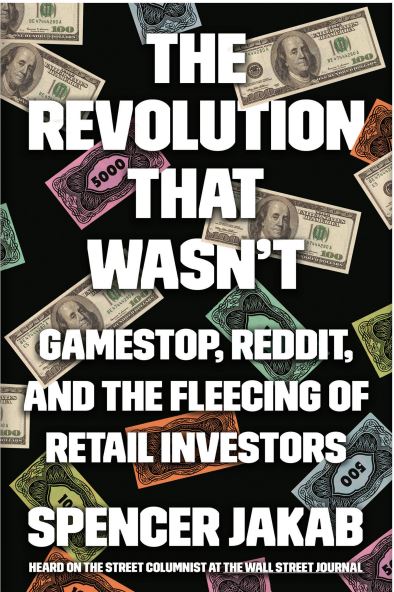‘Tis the season to waste money and enrich huge corporations in a performative act of kindness.
With the school year ending and graduation from college or high school upon us, you have a problem. A gigantic industry will make more than a trillion dollars offering you a solution, pocketing a very handsome profit for itself.
Your kids’ teachers and coaches as well as your children, nieces, nephews, grandchildren, and friends’ and neighbors’ children all traditionally receive a gift at the end of a school year, and especially around graduation. Who has the time to buy an actual physical object for them, though? And who knows if they’ll like it? Returning a small item with a gift receipt is a hassle so they will just have one more piece of junk to clutter up their house.
Gift cards are the obvious choice, which is why hundreds of millions of the plastic cards loaded with money will be handed out year round with peak periods at the end of the school year and the winter holidays.
There are two basic types of gift cards—closed loop and open loop. The far more common closed loop ones are for a specific company such as Applebee’s or Nike and can only be spent there. They’re usually denominated in multiples of five starting around $25. Open loop ones are a pre-loaded debit card that typically comes with a fee for the buyer and an indirect one for the recipient—they lose value over time if not spent.
Both are a bonanza for issuers. First of all, they have your money well before it’s spent, and often it never is. Unused or expired ones earned companies $14 billion in 2020 according to Mercator. You’ve probably heard of “leakage,” the retail industry’s euphemism for losses from shoplifting. This one is called “breakage” and they are a lot more quiet about it. Breakage is pure profit.
For example, Starbucks had what is technically a liability on its balance sheet in early 2022 of about $2 billion. It decided the previous fiscal year that it could book $181 million of that as a gain because some probably would never be used. Meanwhile, it has your cash. If it just put that amount of money in the bank then it would earn an extra $100 million at current interest rates over a year.
There’s more. Most people do spend their gift cards, but usually not exactly the round amounts—particularly for lower-denomination cards that you’re giving the neighbor’s kid for his birthday. The industry calls this “overspend” and it is also a nice chunk of change. Gift card facilitator Blackhawk Network gleefully calculated that people will spend an extra 74% on average on a $50 gift card. The lower the denomination the greater the likelihood that additional money is spent.
Even people who try to spend only about the amount of their gift often can’t because they got one for a business they rarely visit. Speaking as the husband of a school aide, I can tell you that it happens a lot. Mrs. Jakab will eventually use that Dunkin’ card because I keep reminding her about it, but we’re thrifty, make-coffee-at-home people. And many of her fellow school aides aren’t as fortunate as her being married to a lavishly paid journalist and author (🤔). Plenty are trying to keep it going another year or two on creaky knees so they can get a higher Social Security benefit or even to help their adult children with student loans.
Whether they don’t need it or they just really need the money more, this has spawned an inefficient, secondary market in gift cards with the discount to the face value rising the less-frequented the business is. Amazon cards are almost like real money, changing hands close to face value. A $25 gift card for Bob’s Discount furniture, though? Unless you’re buying a $30 sofa, it probably will gather dust. Many do. Or you could sell it online for a whopping $14.
Why do people spend more and more each year on gift cards? Because they’re convenient and it’s polite. But here’s a solution that’s just as convenient for you and far better for the recipient: Give them cash. Legal tender can be spent on literally anything. No, you can’t buy a car or a house with cash without arousing suspicions, but small sums are fine and can even be put in the bank and saved.
Were you considering a more generous gift that would be tougher to spend in cash? Give a check. In the American Jewish community that’s still the default gift for a Bar or Bat Mitzvah and, if a kid is smart, he or she will save a chunk of it. Those small gifts invested in an index fund at age 13 could turn into a down payment for a house at age 33.
Isn’t compound interest the best? Multiples of 18 (the 18th letter of the Hebrew alphabet is Chai, which means “life”) are auspicious, so $180 or $360 if either some or all of the family is invited to the party is pretty standard where I live.
Likewise, if you live in a building with a doorman (generally a team of doormen, plus a “super” in the New York area), you’re expected to hand each of them a holiday bonus. These are people who don’t earn a lot and won’t be reporting these annual tips worth thousands of dollars to the IRS. Cash is appreciated, but most apartment-dwellers write checks these days (makes it more likely they actually get it and that they’ll remember your generosity).
Why don’t people give cash for the many smaller gift-giving occasions? I think it’s because it’s seen as gauche and, sorry for using this word, but “ethnic.” Americans think of the bag full of cash gifts at the wedding in “The Godfather” and the low-class antics of immigrants who don’t know better—a sweaty Clemenza drinking from a pitcher of wine and wiping his mouth on his suit sleeve.

Cash also has a whiff of criminality—like you have something to hide. That perception is both at least a mild inconvenience for the recipient, though, and just wrong. Tony Soprano can buy a gift card with cash and so can you. In fact, criminals love gift cards. Get over it and show that special person you really care by giving them currency.

